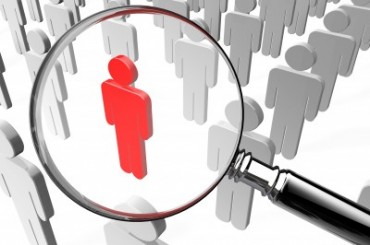Chris Tremblay

Chris Tremblay is the President of Sales and Marketing at Event Technologies. He has over 20 years of experience in the trade show industry.

Trade show organizers have a new problem. Rogue list brokers are targeting their exhibitors, claiming to have access to the official attendee list. We began seeing this more widely in 2017 and by the end of 2018, exhibitors at every show we work were receiving daily emails from these solicitors. Show organizers are seemingly helpless to stop this and as a result, many of our clients have approached us asking if there is anything we can do to help them stop this.
In response to these requests, Event Technologies undertook an effort to look into these list brokers to see if we could gain any insight into how they operate, what they are selling and whether or not they can be stopped. Here is what we found.
Our plan was to make contact with as many of these soliciting companies as possible to see what we could learn. We asked our prospects and existing clients to forward us any solicitation emails they received. The response was overwhelming. Over the course of six weeks, we received over 300 emails from organizers and exhibitors who had received these solicitations. Clearly, we had stumbled upon a widespread issue.
The email solicitations received by the exhibitors have a common theme. The solicitors claim to have the attendee list from a specific show, list the demographic information they will share, indicate the number of contacts in the list (often this is incorrect), and offer to send pricing information. In their email signature, we generally found no useful contact information, and the domain name in their email address was not associated with a legitimate website. We were unable to find anything useful about these companies based on this initial email.
The next step was to reply to each of these emails asking for more information and pricing. Each time the response came from a different contact. This second contact replied saying that they were following up on a request from their marketing department and they would quote us a price to purchase the list. This email always had an address with a different URL than the first contact and there was almost always a functional website associated with this new URL. They typically offered to send us a sample list, which was never more than five contacts, and most of the time they looked promising because the contacts were relevant and the contact information appeared to be accurate.

We studied these websites, looked up the physical addresses, called the phone numbers and tried to find out who owned each site. They all had the same basic, almost identical, information. The text contained general information about digital marketing with many grammatical errors (always a red flag), and there was never information about the specific event that we inquired about. If they contained social media links, those links typically didn’t work. The physical address for the business was always a shared workspace, a mailbox rental store, a house or a huge building with no specific suite number somewhere in the U.S. The phone numbers included on these websites went straight into a generic voicemail. However, when we left a message, we would typically receive a phone call the next day, as long as we said we were looking to buy.
All of the sales reps that returned our voicemails had Indian accents and were willing to answer our questions. When asked how they acquired the show list, some would say they were partnered with the event, and others would create an elaborate story that often involved verifying the attendees by starting with a massive database and then using social media, travel records and partners they had that worked directly with the event. Some would even admit that they didn’t have the actual list, but instead a larger list that most likely included all the shows attendees. As one solicitor put it, the list was “inclusive of all probable attendees” of the given event. This individual then went onto say that they were helping the events by “bringing them more publicity.”
On some email communications, we would simply say that we were ready to buy the list, and they would send us an invoice asking us to sign it and send it back. They said that once we paid they would send our list in a week or so. The preferred payment method was through wire transfer or PayPal in some cases but never via credit card. We didn’t purchase any lists, but we assume that this is because credit card companies have robust fraud prevention departments and it’s easy for them to reverse the charges when fraud is claimed. Most of the companies we dealt with have a stated “No Refund Policy” so getting a refund, in the event of a dispute, is unlikely.
While researching this, we received an email from a colleague who had purchased a fraudulent list. She paid $700 for what was supposed to be the attendee list for a medical show where she was exhibiting. After realizing that she had been duped, she thought about taking legal action but because the cost of the list was $700, the expense of pursuing legal action did not seem worth it. She sent us the list and we analyzed the data. Surprisingly, the data looked legitimate but it was definitely not the show list. It was a list of 15,000 doctors and the 100 records that we examined mostly contained valid contact information.
We spoke to a number of exhibitors that had purchased one of these lists and we were able to confirm that the lists were NOT the real attendee lists. And as we noted earlier, a number of the list vendors also confirmed that they do not have the real attendee list. We believe that most of these companies sell legitimate lists; they are just not the list of the event’s attendees. They use cheap manpower to scour the internet and collect phone and email information for tens of thousands of people and then sell that information to U.S.-based companies. In the last couple of years, they figured out that exhibiting companies were often desperate to get a hold of attendee lists, so they started to focus their marketing efforts on exhibitors.
As it turns out, there are some steps you can take to help mitigate the situation but using the law does not seem to be one of them. We spoke with a number of show organizers who said they had threatened legal action and sent cease and desist letters. We have no evidence that would lead us to believe that it’s having any effect. In addition, many of the shows we inquired about had more than one company attempting to sell the list. We believe that many of the sites that we encountered are owned by the same individuals, and there is evidence online that they have shut down old websites and opened new ones with slightly different names. So stopping one of these websites will not stop a different one from soliciting your exhibitors.
From our investigation, the biggest problem for show organizers is the massive number of emails that are being sent to their exhibitors and the confusion it is causing. We recommend you implement one or more of these suggestions:
The strategy that we are going to use to help our customers will include diplomatically threatening the list vendors with something that we think they will care about. We have a good strategy for this and would be happy to share it with you if you are interested. In 2019, we will be executing this idea for the shows that we work with and we should have some feedback in March.
The good news is you can be fairly certain that these companies do not have your current attendee list, and there are some pro-active steps that can help minimize the disruption caused to your exhibitors. If you have any ideas on how the trade show community can fight back, let us know and we will be happy to lead the charge.
Don’t miss any event-related news: Sign up for our weekly e-newsletter HERE and engage with us on Twitter, Facebook, LinkedIn and Instagram!

Add new comment